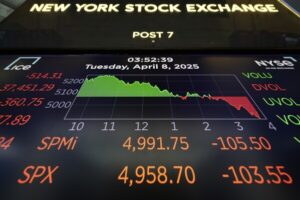Markets took investors on an up-and-down ride during a volatile first half of the year, with notable swings coming amid uncertainty about the impact of tariffs on the US and the global economy. In…
Read More
2025 Q2 Market Review
Below is a summary of global financial markets in Q2 2025. Please do not hesitate to reach out with any…
Read More
2025 Economic & Market Update
The first half of 2025 has been full of twists and turns: ever-changing trade tariff policies, growing concerns over AI competition with China, contradictory efforts to manage the budget deficit just…
Read More
I Just Became a Father, Here’s What I Learned
Sunday, May 4th, 9pm, my wife’s water broke. We weren’t panicking as it was only 4 days…
Read More
Investing in the U.S. – A Guide for Australian Investors
The allure of the U.S. stock and private markets is undeniable. With its vast array of high-growth companies, technological…
Read More
Global Diversification
In light of the recent market volatility, it’s good to remember the importance of diversification. The following slides show the randomness of returns…
Read More






